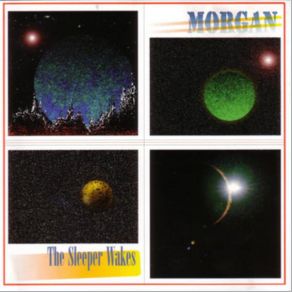The Sleeper Wakes
Download links and information about The Sleeper Wakes by Morgan. This album was released in 1977 and it belongs to Rock genres. It contains 4 tracks with total duration of 40:45 minutes.

|
|
|---|---|
| Artist: | Morgan |
| Release date: | 1977 |
| Genre: | Rock |
| Tracks: | 4 |
| Duration: | 40:45 |
| Buy it NOW at: | |
| Buy on iTunes $9.99 | |
Tracks
[Edit]| No. | Title | Length |
|---|---|---|
| 1. | Fire In the Head | 5:01 |
| 2. | The Sleeper Wakes | 6:11 |
| 3. | The Right | 9:37 |
| 4. | What Is - Is What | 19:56 |
Details
[Edit]Originally released by Passport in the U.S. in 1977, and by Cherry Red in the U.K. in 1978 under the title Brown Out, Morgan's second album was issued under the name The Sleeper Wakes on CD in 1999. On the surface, this is period pretentious keyboard art rock, with similarities to Emerson, Lake & Palmer in the noodly classical rock arrangements and Yes in Tim Staffell's high, Anderson-esque vocals. There's more to it than meets the ear, though. The helium-squeak timbre of the speedy VCS3 synthesizer solos on "Fire in the Head" is plenty more Frankenstein-ian and zany than what most art rockers of the time would venture into. Too, the usual art rock cliches are set off by some pretty weird avant-garde sections, like the murky sound collage in the middle of "The Right," or the outer space-soundtrack effects on "The Sleeper Wakes." There are odd sections of such left-field intensity that one does not feel entirely sure of whether it's all deadly serious (which it probably was), or a rather deft tongue-in-cheek homage/parody to British prog rock's bronze age. And of course there's a 20-minute opus, "What Is—Is What," that's so convoluted — complete with Zappa-esque orchestration for a minute or two — that any band brave or foolish enough to learn it by heart should be awarded a free Mellotron or something. If you're looking for something in the classic art rock style that's stranger and more unpredictable than most, this is a pretty good bet to do the job. Detailed liner notes by bandmembers Morgan Fisher and Tim Staffell are a good reason to pick this up rather than the previous LP configurations of the recording.